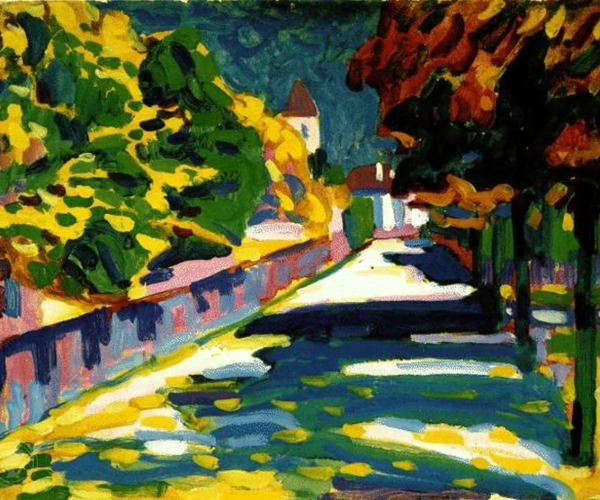Autumn in Bavaria
Wassily Kandinsky, a pioneer of abstract art, was a Russian painter and art theorist known for his innovative and expressive use of color and form. "Autumn in Bavaria" reflects Kandinsky's deeply spiritual and emotional connection to the natural world, as well as his revolutionary approach to abstraction and symbolic representation.
In "Autumn in Bavaria," Kandinsky skillfully combines vibrant, organic shapes and bold, dynamic lines to evoke the essence of the autumn season. The painting's rich, earthy palette and rhythmic compositions transport the viewer into a realm of heightened sensory experience, where the colors and forms seem to dance and pulsate with life.
Kandinsky's unique synesthetic approach to art, where he sought to evoke emotions and musical sensations through visual means, is evident in ""Autumn in Bavaria."" The painting exudes a sense of harmony and melodious movement, inviting the viewer to explore the interplay between color, line, and form in a deeply personal and subjective manner.
Through "Autumn in Bavaria," Kandinsky invites us to transcend the literal representation of the natural world and enter into a realm of pure emotion and spiritual expression. This work stands as a testament to Kandinsky's enduring legacy as an artist who sought to unlock the inner mysteries of the human experience through the language of abstraction and color.







No Comments Yet...